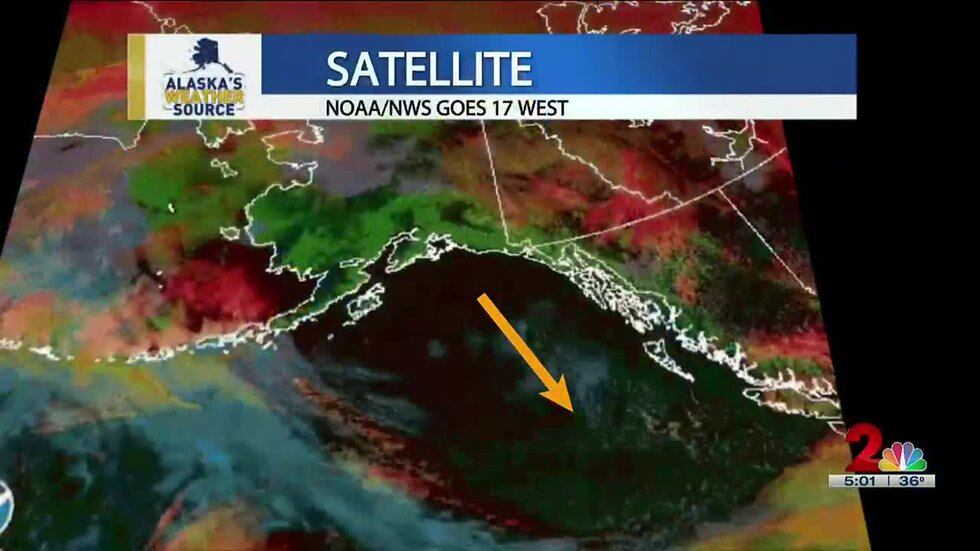Dogbreath
Well-Known Member
We all remember that year and look what just happened.

 www.alaskasnewssource.com
www.alaskasnewssource.com
ANCHORAGE, Alaska (KTUU) - The ash from Russia’s Sheveluch Volcano, which erupted early Saturday morning sending ash as high as 32,000 feet into the atmosphere, has completed its journey over the northern and eastern skies of Alaska.
Even though the ash has moved offshore into the northeast Pacific Ocean, it still poses a risk to aircraft, according to the National Weather Service. For this reason, the NWS’ Anchorage Volcanic Ash Advisory Center has continued its Volcanic Activity Advisory into Monday morning for any pilots who may be flying over the northeast Pacific.
Since the eruption, the ash has been moving clockwise around a strong area of high pressure over the Bering Sea and Southwest Alaska. Observations taken around 3 p.m. Sunday from U.S. satellite imagery, as well as confirmed pilot reports diverting around the volcanic ash, indicated the ash cloud was continuing to move south-southeast steadily at 100 mph.
According to the National Weather Service’s Anchorage Aviation Weather Unit, even though the forecast movement of the ash will remain over the ocean, aircraft will still have to continue to divert their paths around the ash to avoid any damage to the engines. According to the weather unit, each airline makes its own decisions about alternating flight paths based on the provided forecasts. The situation and track of the ash continues to be closely monitored by the weather unit, with advisories being issued roughly every six hours.

Ash from Sheveluch Volcano moves off Alaskan coast, but remains a hazard for aircraft
Ash from Russian volcano has moved over open waters of the eastern Pacific, but Volcanic Ash Advisories remain in effect as aircraft need to continue to stay away from the ash.
Ash from Sheveluch Volcano moves off Alaskan coast, but remains a hazard for aircraft
Volcanic Ash Advisory for aircraft continues into Monday morning
ANCHORAGE, Alaska (KTUU) - The ash from Russia’s Sheveluch Volcano, which erupted early Saturday morning sending ash as high as 32,000 feet into the atmosphere, has completed its journey over the northern and eastern skies of Alaska.
Even though the ash has moved offshore into the northeast Pacific Ocean, it still poses a risk to aircraft, according to the National Weather Service. For this reason, the NWS’ Anchorage Volcanic Ash Advisory Center has continued its Volcanic Activity Advisory into Monday morning for any pilots who may be flying over the northeast Pacific.
Since the eruption, the ash has been moving clockwise around a strong area of high pressure over the Bering Sea and Southwest Alaska. Observations taken around 3 p.m. Sunday from U.S. satellite imagery, as well as confirmed pilot reports diverting around the volcanic ash, indicated the ash cloud was continuing to move south-southeast steadily at 100 mph.
The forecast path issued at 3 p.m. Sunday showed ash over the southeast Gulf of Alaska, a few hundred miles offshore. By 9 o’clock, the ash will have turned more to the south and southwest over the northeastern Pacific, once again several hundred miles southwest of the Canadian west coast. The ash is then expected to dissipate as it moves farther south and west during the morning hours on Monday.According to the National Weather Service’s Anchorage Aviation Weather Unit, even though the forecast movement of the ash will remain over the ocean, aircraft will still have to continue to divert their paths around the ash to avoid any damage to the engines. According to the weather unit, each airline makes its own decisions about alternating flight paths based on the provided forecasts. The situation and track of the ash continues to be closely monitored by the weather unit, with advisories being issued roughly every six hours.

